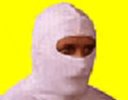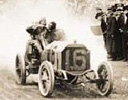|
Safety Emphasis -- Circuits or Cars
Zanardi says, "Make the tracks safer." But is that really where the safety emphasis should be?
Lisa Davidson and Russell Jaslow take up opposing views.
|
CIRCUITS
When Alex Zanardi was asked about making cars safer during CART's Sneak
Preview last month, I was expecting a somewhat politically correct
answer from the charming Italian. Silly me! Alex said that, no he didn't
think the cars were a problem -- he thinks that CART's cars are the
safest of all the open wheel cars. Zanardi says, in essence, make the
tracks safer.
Alex is right. I watched Greg Moore die at California Speedway a little
over a year ago. For whatever reasons, a concrete wall was placed in the
infield perpendicular to the track. Moore hit that wall, and it helped
to end his life. To my way of thinking, it was a death that didn't need
to happen, and I can't imagine why the track designers elected to put
that wall into their final product. It simply makes no sense.
Unfortunately, to make tracks safer will involve spending more money
than promoters will likely want to pay. Too bad. In my not so humble
opinion, the loss of life of healthy young men for entertainment
purposes is unacceptable. So, it's up to journalists, drivers, fans, and
yes, CART itself to insist that all of CART's venues be improved to be
as safe as possible. And, if that means less profit, we can
only hope that all concerned can take a more longterm view and not just
focus on what's earned in one year.
CART's differing course types make this even more imperative. Speedways
need to continue to investigate soft wall technology. Road courses need
to look into more sophisticated means of slowing down off course
vehicles than kitty litter and tire barriers. Street courses need to be
laid out in the safest manner possible, and if they cannot be made safe,
the races moved to venues that are safe.
What we can't do is cop out and say that racing is simply dangerous and
risky. I don't deny it is. So is driving any car under certain
conditions. I'm also not advocating that efforts to make the cars safer
be abandoned. Nor am I saying that driver safety advances, such as the
HANS device, not be considered. What I am saying is that all of these
efforts may be less than effective if we don't take a good hard look at
our courses and insist on making them safer.
|

|
CARS
At this year's CART Sneak Preview, Alex Zanardi made reference to the idea that the emphasis
on safety should now be on the circuits. I would never argue that any kind of safety should
be anything but an emphasis. However, I feel that if there were an emphasis, it should remain
with the safety of the cars and the driver compartment.
Here's why. No matter how safe one makes a race track, there will always be something hard to
hit. Sand traps, tire walls, and far away walls have been all the rage in Formula One, the
leaders in track safety. Yet, Michael Schumacher still found a hard enough wall to break his
leg in 1999.
After the Gonzalo Rodriguez tragedy at Laguna Seca in 1999, an effort was made to move some
walls back and add some sand traps. Yet, it was one of those sand traps and moved walls that
helped propel Patrick Carpentier up and over the wall, catch fencing, and down the other side
for a very hard landing.
Soft walls, especially on ovals, may prove to be one of the greatest safety devices ever invented.
However, pavement is still, and always will be, hard. And race cars sometimes fly, especially
open wheel cars. And when they fly, they eventually have to land. And unless the car and the
driver compartment are properly designed, the results can be catastrophic.
Then there are the car to car crashes. No track safety feature will ever be able to do
anything for these situations. Jacques Villeneuve slicing Hiro Matsushita's car in half at
Phoenix in 1994 is a perfect example.
We don't want to pooh-pooh want Zanardi is saying. There are huge advances that can be made
in track safety. However, like the old saying goes, you have to take care of yourself first,
and for racing that's making sure that if there needs to be an emphasis on safety, that emphasis
continues to be placed on the cars and driver compartment.
The HANS device is the most logical item. Others include preventing objects from penetrating
the driver cell, lighter and stronger helmets, advances in cushioning materials around the
driver, and energy dissipation within the chassis.
|
|
Copyright © 2001 by Lisa Davidson, Russell Jaslow, and Deep Throttle. All Rights
Reserved.
|




